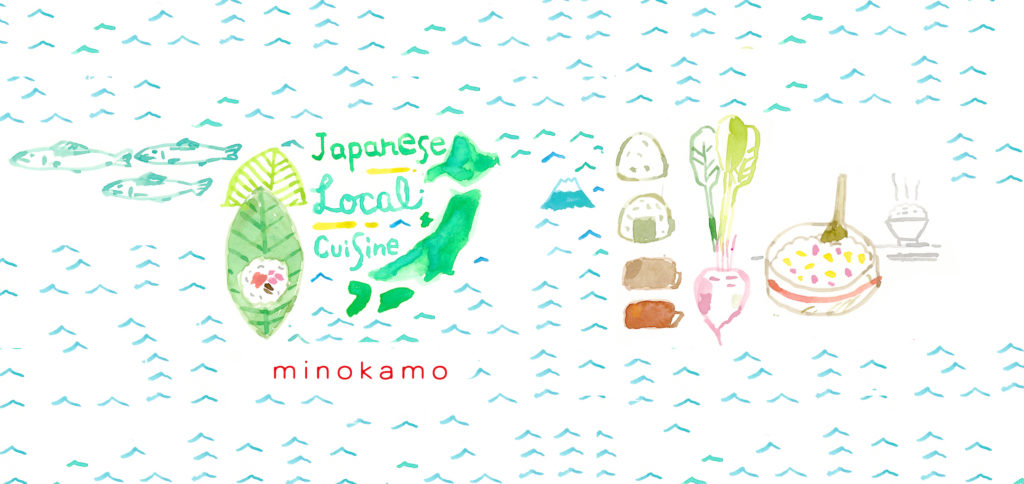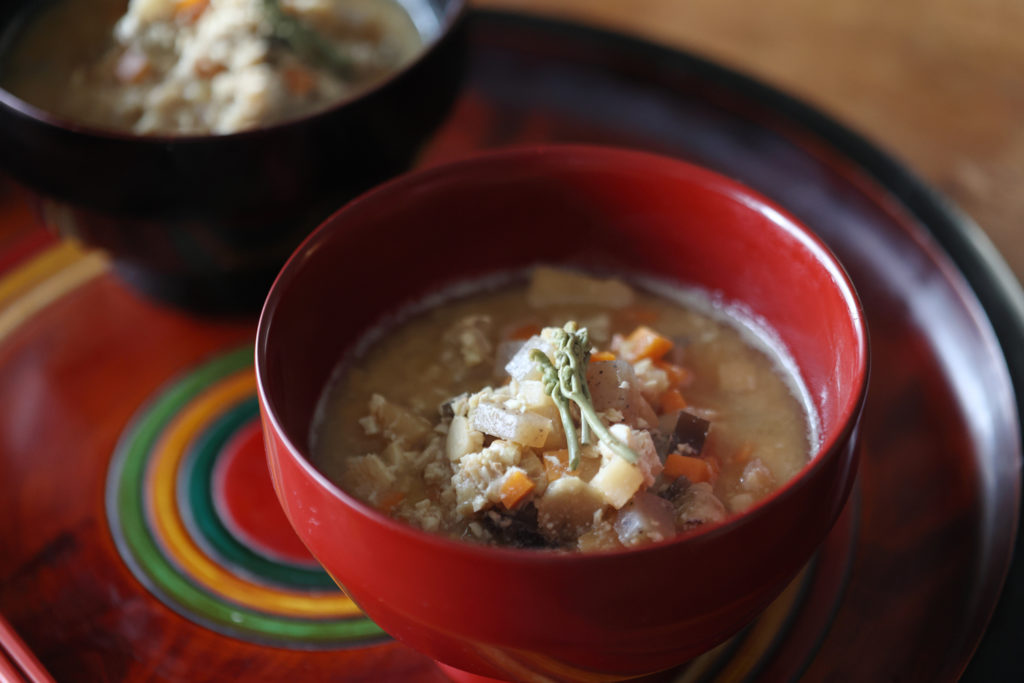
Ingredients (serves 4)
A
・1 koya-dofu / frozen-dried tofu
・100 g soybeans (about 300 g when infused in water)
・1 abura-age / deep-fried tofu pouch
・1/2 (100 g) konnyaku / konjac jelly
・1/2 carrot
・10 cm daikon
・1/2 gobo / burdock root
8 boiled warabi / bracken
4 tbsp miso
1/2 tbsp soy sauce
(Stock)
10 cm dried kelp for kombu dashi
4 niboshi / dried sardines
600 cc water
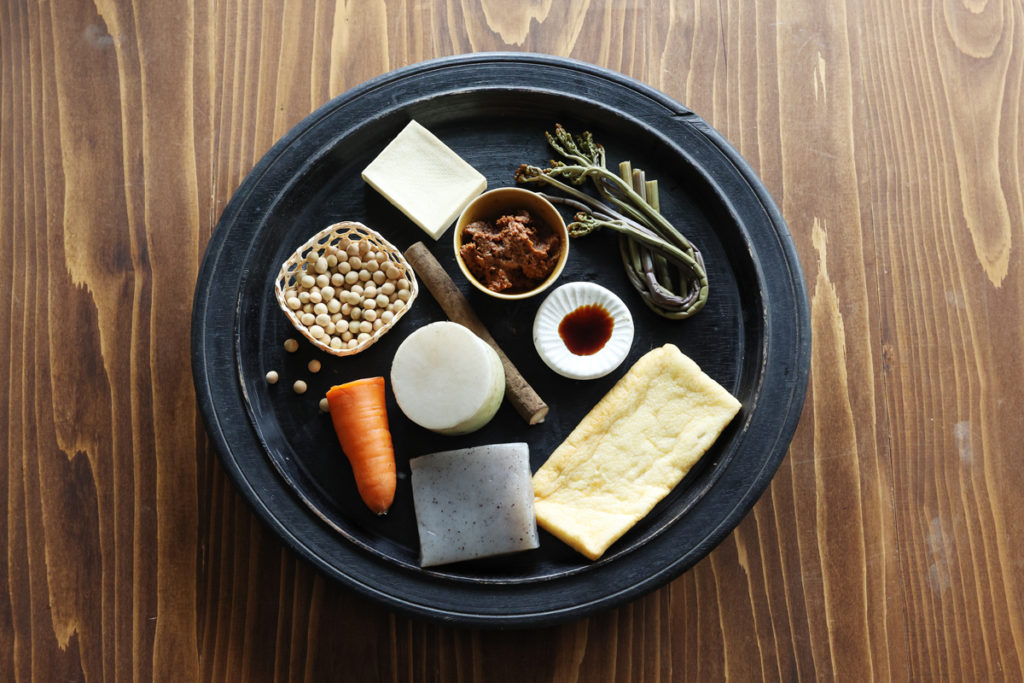
How to make
1. Infuse the soybeans in plenty of water for a half or whole day. Immerse the koya-dofu in water for about 30 minutes. Soak the dried sardines (remove the head and gut) and dried kelp in 600 cc water for about a half day.
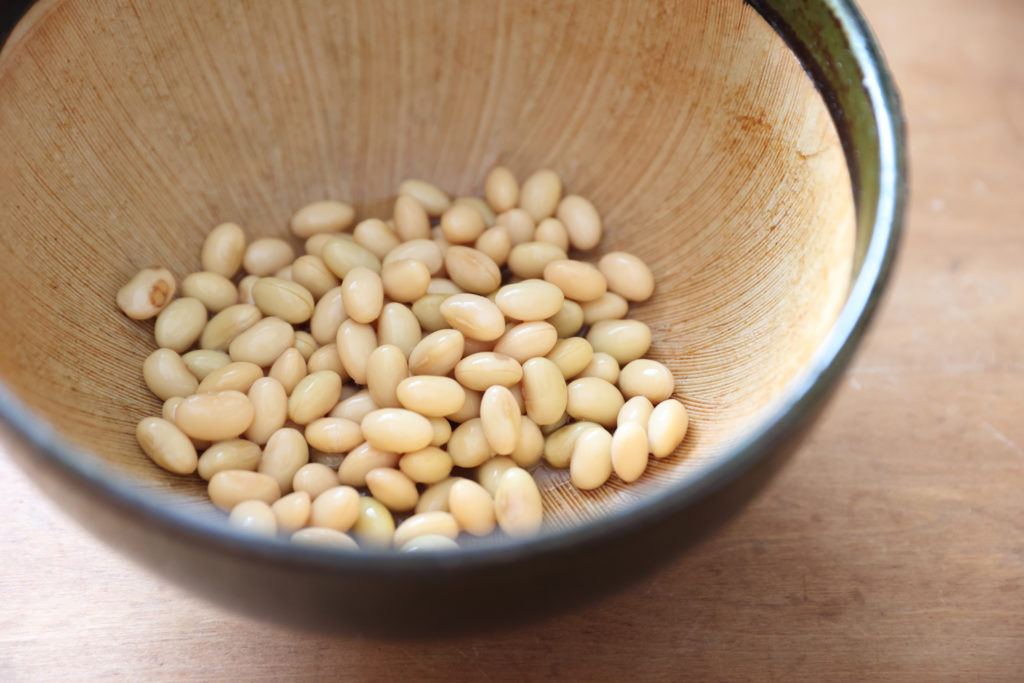
2. Cut the konjac jelly, carrot, daikon, koya-dofu, and abura-age into 1 cm cubes. Use the back of the kitchen knife to scrape the skin off the burdock root, then cut into 5 mm rounds, and soak in water to remove the scum. Chop the bracken into 1 cm long pieces.
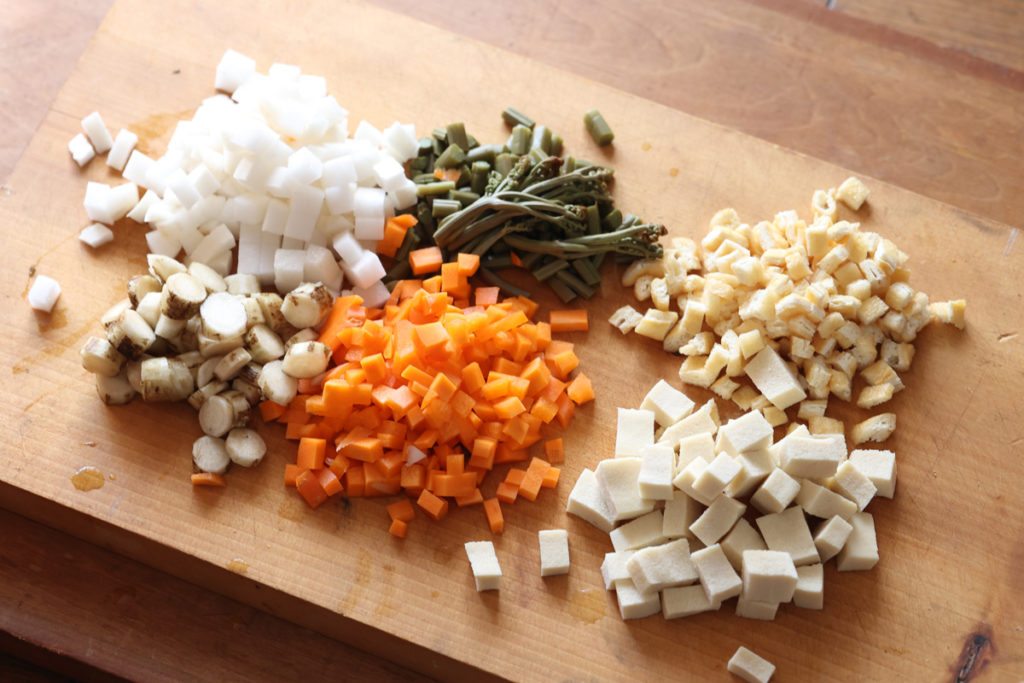
3. Place the soaked and drained soybeans in a suribachi (mortar) and grind to a rough, grainy texture. Remove any thin skins that come off. If using a food processor, the thin skins will be small and can be left in.
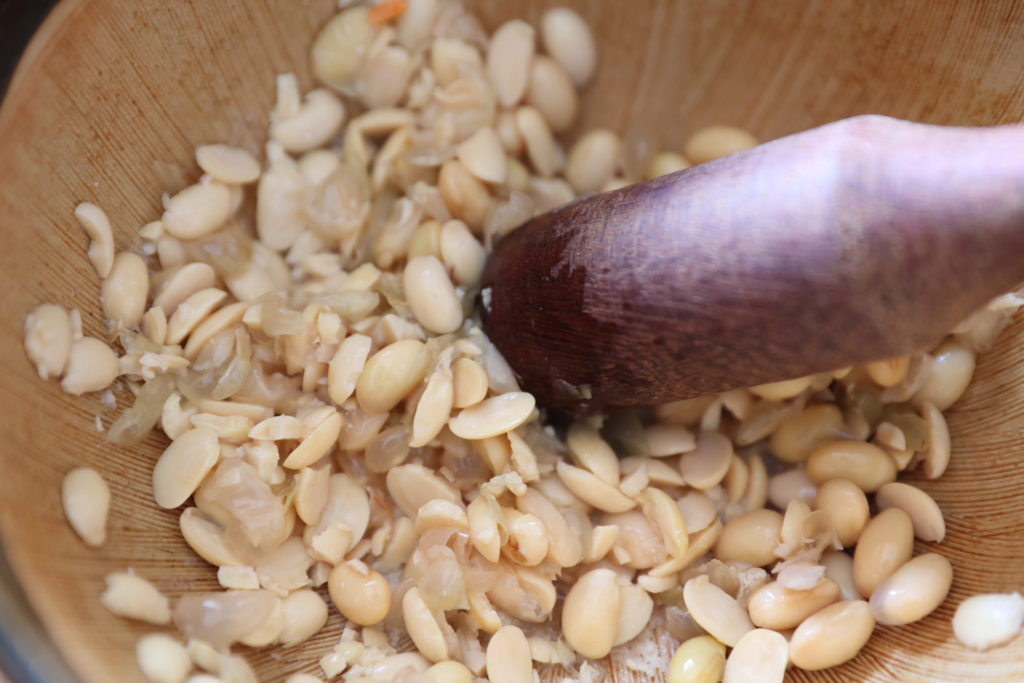
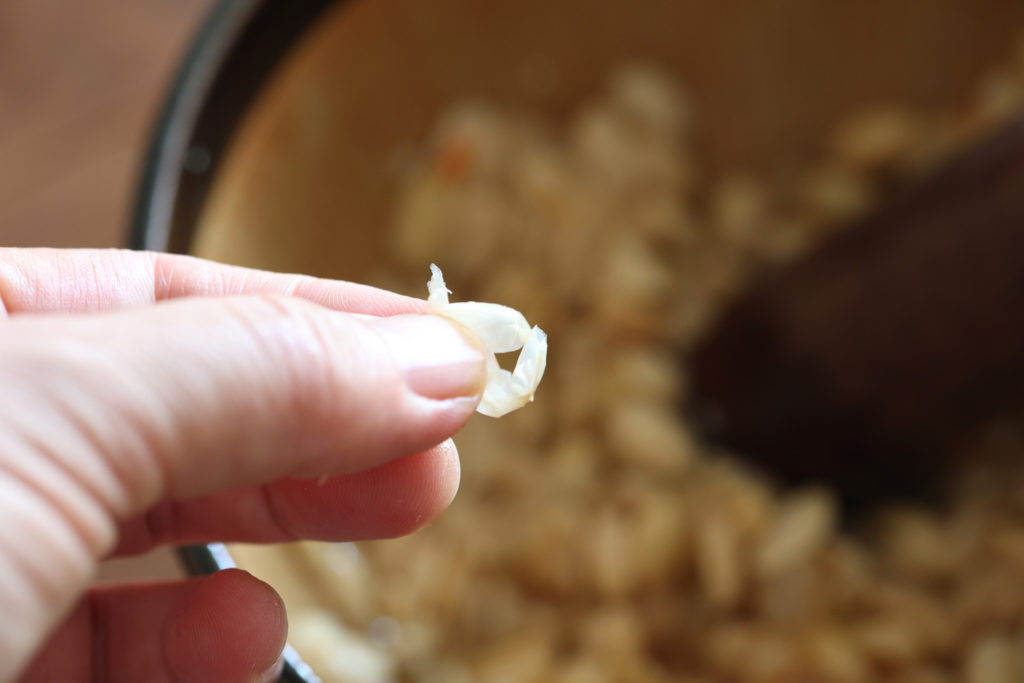
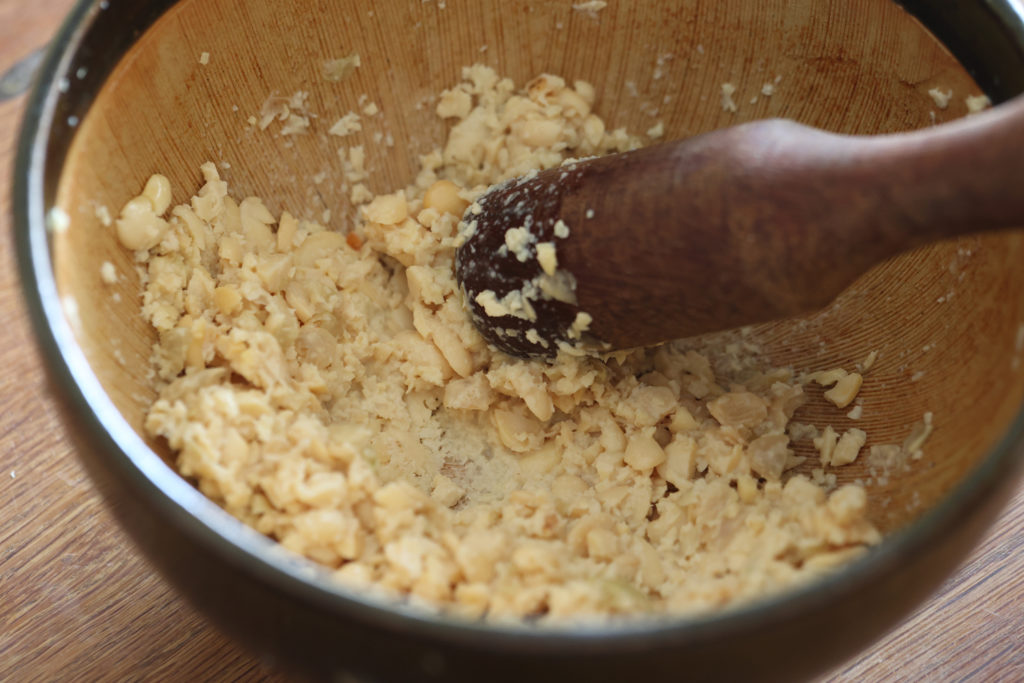
4. Place (A) and the stock in a pot and cook over medium heat. Remove any scum. When the dried kelp turns soft, take it out, cut it into 1 cm squares, and return it to the pot. When the ingredients are cooked, add the ground soybeans, bring to a boil, and add miso and soy sauce. Adjust the amount of miso according to the size of the ingredients.
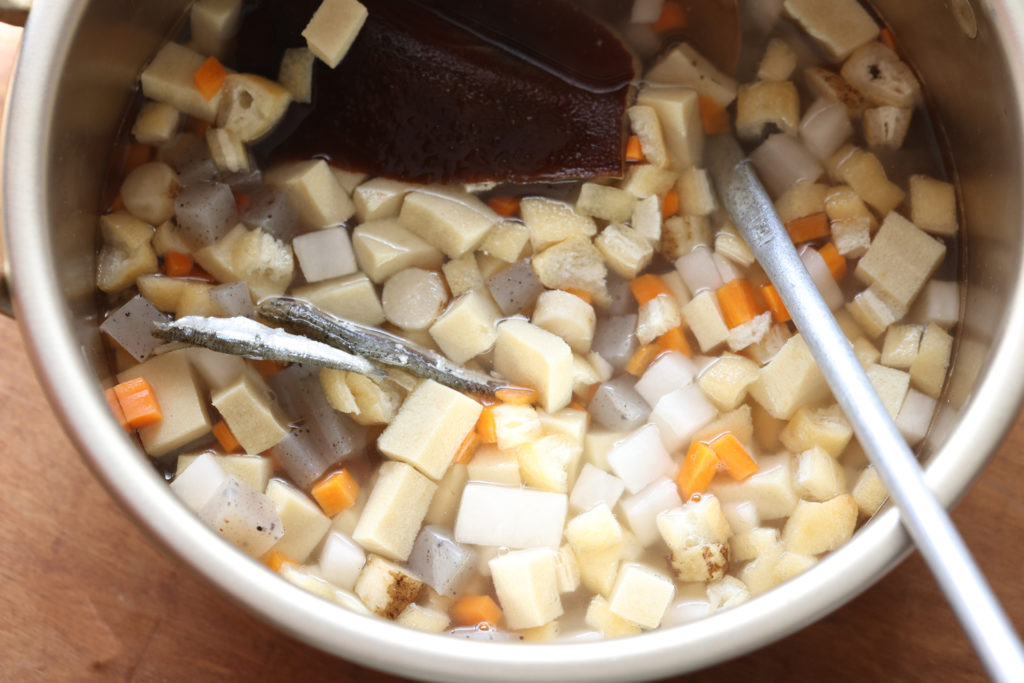
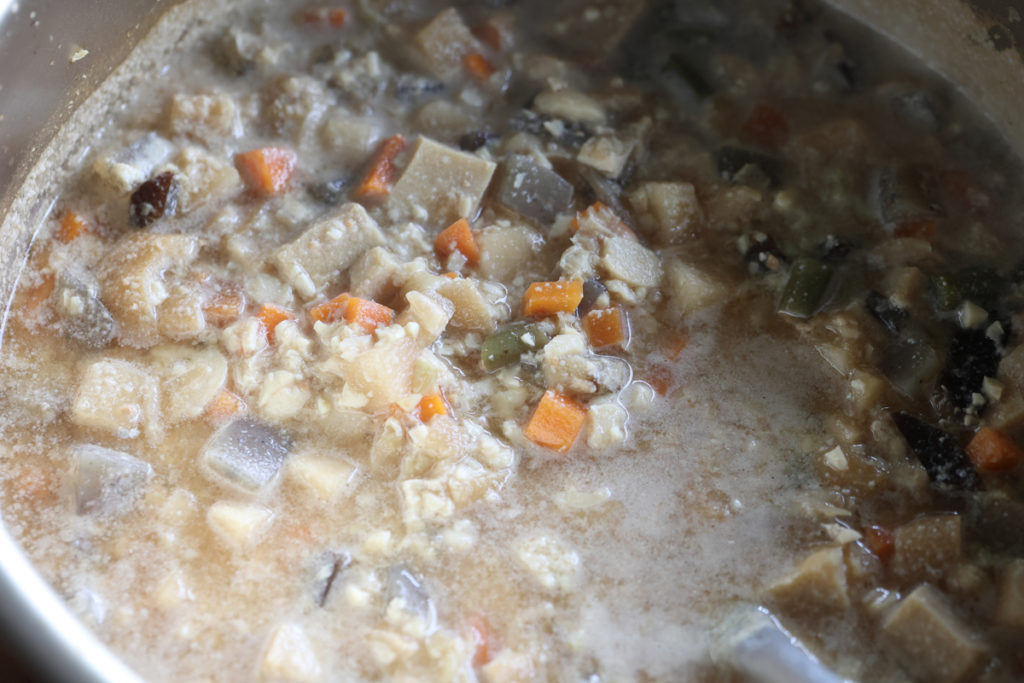
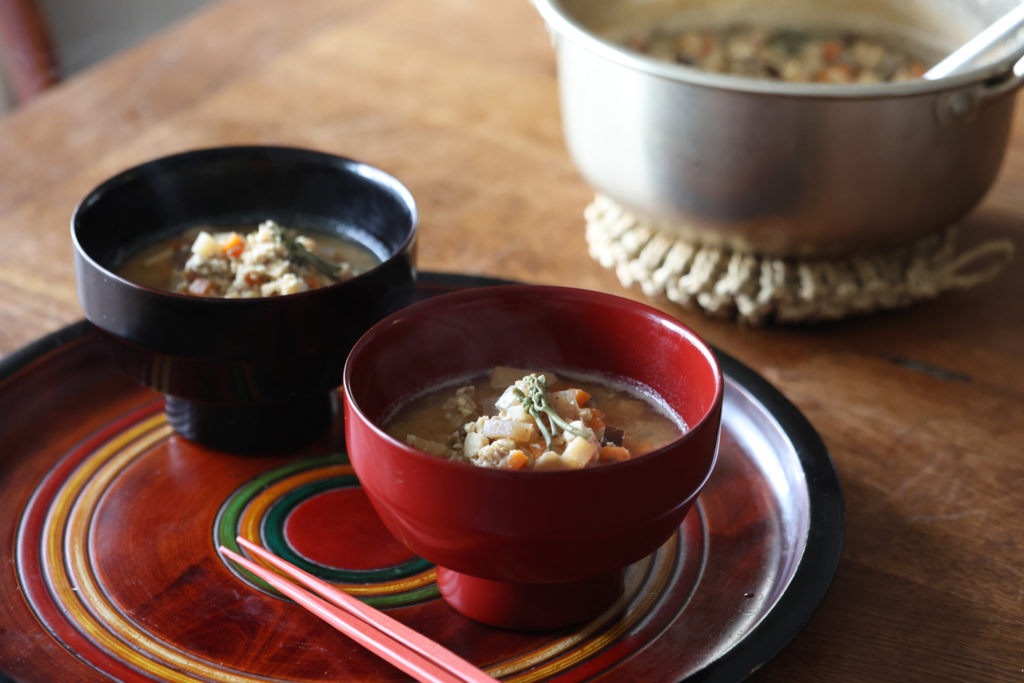
Kenoshiru is a signature dish of the Tsugaru area of Aomori Prefecture, prepared for Koshogatsu, or the Japanese “Little New Year” on January 15. I learned this recipe from a local mom at a diner in Hiromae.
The Buddhist vegetarian dish is made with salted butterbur, wild vegetables, koya-dofu (frozen-dried tofu), konjac jelly, root vegetables, dashi stock using a combination of yakiboshi and kombu, and ground soybeans, and finally flavored with miso. The greatest feature is that the soybeans are ground and all other ingredients are cubed—a technique originally devised to imitate rice, since rice was not grown in the Tsugaru area. Kenoshiru is traditionally made in a large pot, strongly seasoned, and frozen; servings of the frozen soup are then transferred to a smaller pot and reheated as needed. The recipe is nutritious, the strong flavor helps with preservation, the large batch intends to lighten the burden of housework on the women, and those who eat it pray for safety and peace in the year ahead. The small pieces of ingredients means a variety of textures and flavors spread in the mouth with each bite. What a delicious treat!
This time I used niboshi (dried sardines), but in Aomori, it’s customary to make dashi stock with yakiboshi (charcoal-grilled dried sardines). Remove the head and gut, skewer the sardines, cook over a grill, and then dry in the sun. This is incredibly time- and labor-consuming to prepare, but it makes a rich, refined soup stock. Every family has its own flavor of kenoshiru.
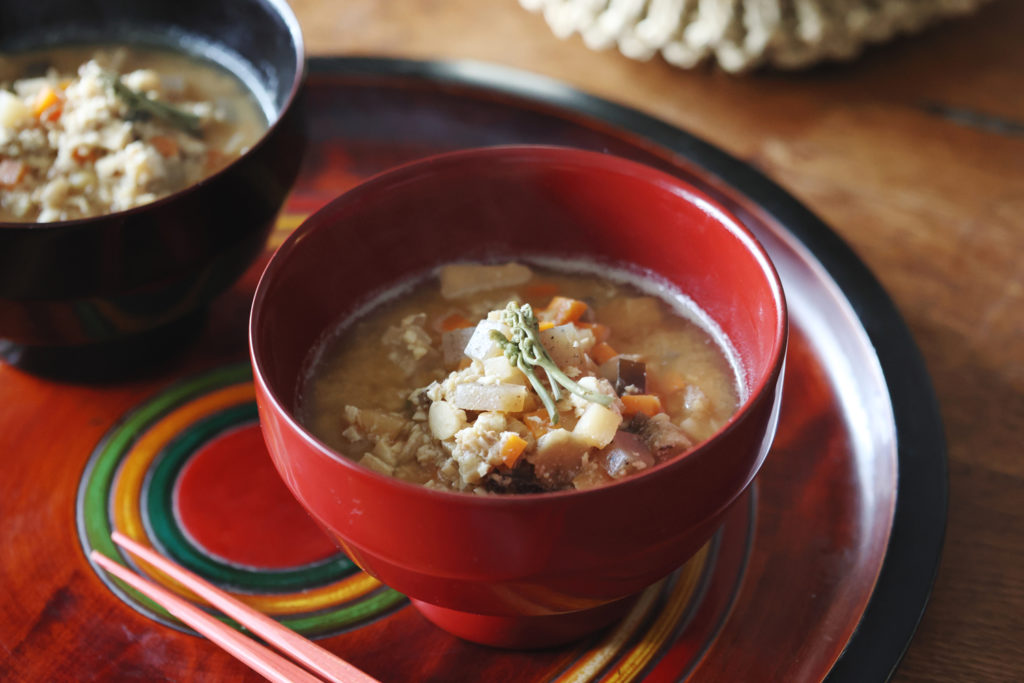
minokamo | Cookery expert / Photographer
Gifu Prefecture native minokamo’s culinary adventures were inspired by her fond childhood memories of cooking with her grandmother. She researches, writes about, and arranges regional dishes that capture, through their preparation and presentation, sensory enjoyments inspired by local climate, history, and lifestyles. Ryori tabi kara tadaima(Back from a Cooking Journey; Fudosha), published in September 2020, is a collection of recipes from minokamo’s visits to homes up and down Japan. Kona 100 mizu 50 de tsukuru suiton (Suiton Recipes—Flour 100 Water 50; Gijutsu-Hyoron) is now out.
